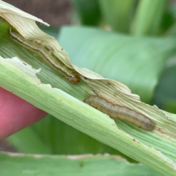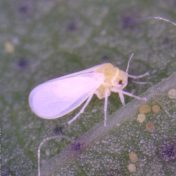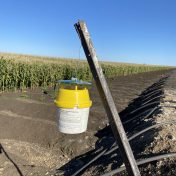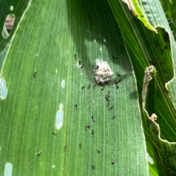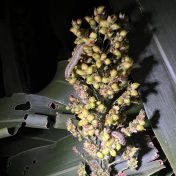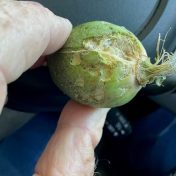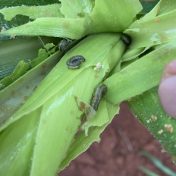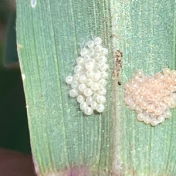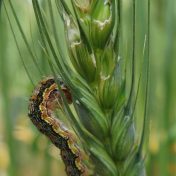Native armyworm species are currently present in many young maize and sorghum crops across southern and central Queensland. Sometimes it is just the occasional larva, but in other situations native armyworms are at higher densities than fall armyworm (FAW). As far as we know, native armyworm are far less damaging to establishing crops than FAW and are unlikely to cause… Read more »
As part of the cotton industry’s proactive approach to managing resistance risks, there is an ongoing program of resistance surveillance in the major pest species. Resistance to spirotetramat (Movento®) was first detected in silverleaf whitefly (SLW) in the Burdekin region in 2016. From 2016–2024, 131 SLW populations have been collected and tested for resistance to spirotetramat, 4 populations were from… Read more »
The Field Crops Entomology Team at the Queensland Department of Agriculture and Fisheries has recently established a new moth pheromone trapping network to inform the northern grains industry of the seasonal population patterns of key caterpillar pests. A collaborative network of more than 25 growers and agronomists are assisting the monitoring of pheromone traps in 20 locations across 10 regions…. Read more »
Since 2022, an insecticide resistance surveillance program for fall armyworm (FAW) has been conducted annually by NSWDPIRD in collaboration with DAF entomologists. Resistance to older products, such as carbamates (Group 1A), organophosphates (Group 1B) and pyrethroids (Group 3A) has been confirmed in many FAW populations worldwide, and there are concerns that the increase in spraying to control FAW may lead… Read more »
Maize and sorghum crops across Queensland are experiencing extreme fall armyworm (FAW) pressure. In Central Queensland in particular, sorghum planted in the typical planting window has been heavily impacted by the very high FAW pressure. Persistent, high-density infestations pose a risk to crops from emergence through to grain fill. In an unwelcome development not observed in previous seasons, large FAW… Read more »
Late sorghum is susceptible to FAW damage, and potential yield loss, in the vegetative stage. This article discusses how the yield loss happens and how to determine if your crop is at risk. The information below was generated from both sorghum trials being undertaken at the Gatton research station funded by the Queensland Government and GRDC in collaboration with QAAFI… Read more »
There have been reports of mice activity in some crops around the Central Highlands, including grain sorghum, mungbean and cotton. Numbers of house mice (Mus domesticus) are generally low in cropping areas, but plagues can occur when conditions are favourable. Mouse populations have the potential to build rapidly and can do considerable damage in high numbers. Controlling plagues is both… Read more »
If you are managing fall armyworm (FAW) in maize, you may have noticed that the permit for Affirm® (emamectin benzoate) (PER93226) had disappeared from the APVMA permits portal. PER93226 was temporarily suspended whilst clarification was sought around withholding period (WHP) and use patterns. While PER93226 is now back on the APVMA permits list, it is important to note it has… Read more »
Fall armyworm (FAW) moth catches have increased significantly in some regions over the past few weeks (see trapping counts below). It is unclear whether this increase in trap catches is indicative of migration events (perhaps associated with the recent storm activity) or increasing night temperatures that allow for greater movement of moths that may have emerged locally. Very low densities… Read more »
Many regions in Qld and northern NSW are still experiencing an outbreak of Helicoverpa armigera in wheat. Before the last significant outbreak occurred in 2016, it had been many years since anyone had seen such an event, and while there was a smaller outbreak in 2020, it was not on the scale or severity of this year. In many crops… Read more »
